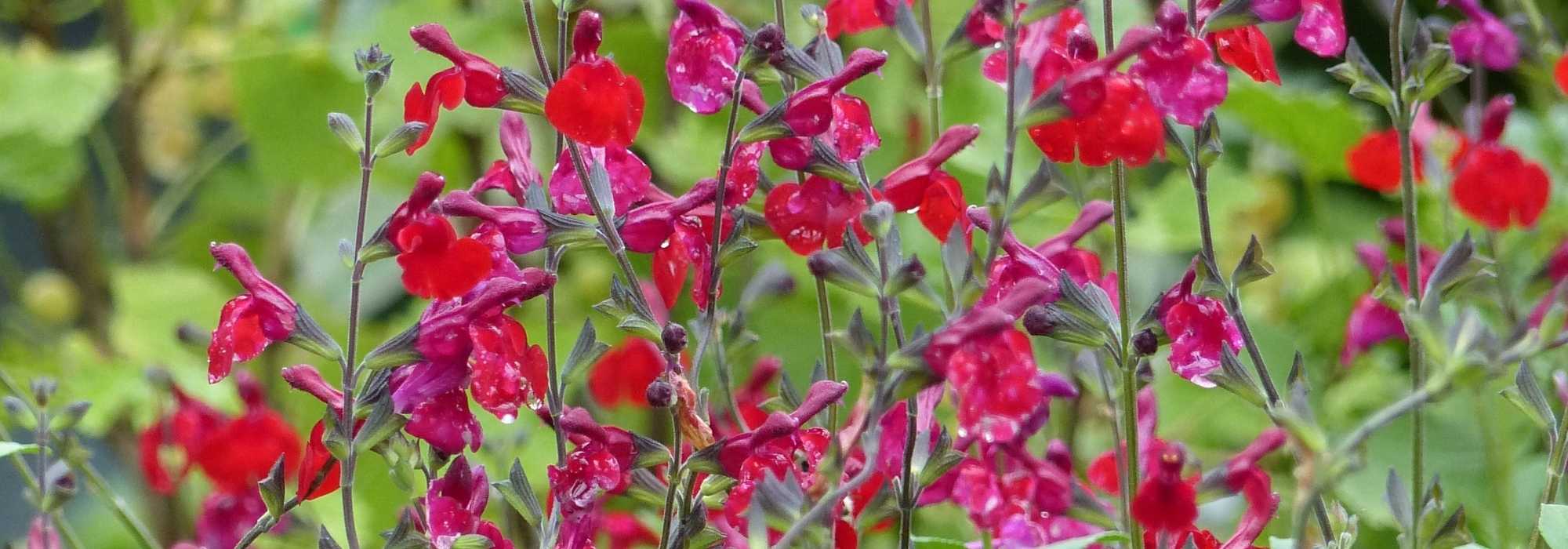
Shrubby sages: planting and care tips
Contents
Shrubby sages in a few words
- Shrubby sages flower abundantly from spring until autumn, without interruption.
- They form beautiful bushes, sometimes reaching nearly 2 metres in height.
- They are covered with small flowers in varied shades of red, pink, or even blue, and feature pleasantly aromatic foliage.
- They thrive in sunny, well-drained soil and are highly drought-resistant.
- More or less hardy depending on the variety, they are easy to grow in pots and can be stored indoors during winter in colder regions.
The word from our expert
The shrubby sages are highly floriferous perennial shrubs, such as Salvia grahamii, greigii, or microphylla. Their small flowers bloom for 5 months, mingled with semi-evergreen, highly aromatic foliage. Though not edible, their leaves release an aniseed fragrance when crushed. They are cherished for their exceptionally long flowering period from April until the first frosts, in an infinitely varied palette of colours, ranging from white to pink, and even regal blue, as seen in ‘Blue Note‘, for example.
This shrub can reach up to 1.75 m in height, like the Salvia guaranitica ‘Black and Blue’, which forms a spectacular bushy clump.
Does shrubby sage fear frost? It depends! For this mild-climate plant, hardiness varies depending on the variety or species. The hardiest shrubby sages (tolerating temperatures as low as -10° to -15°C, in well-drained soil) require only very well-drained soil and a sunny, sheltered spot to thrive. However, as they adapt wonderfully to container gardening, gardeners in more continental climates can enjoy their flowers on the terrace and store them away in winter to protect them from severe frosts.
All prove resistant to summer drought. Low-maintenance, shrubby sages need only a winter pruning and protection from the cold with winter fleece and a thick mulch spread over the stump.
Try growing them in a dry garden, cottage gardens, or Mediterranean gardens to adorn terraces or sunny borders!
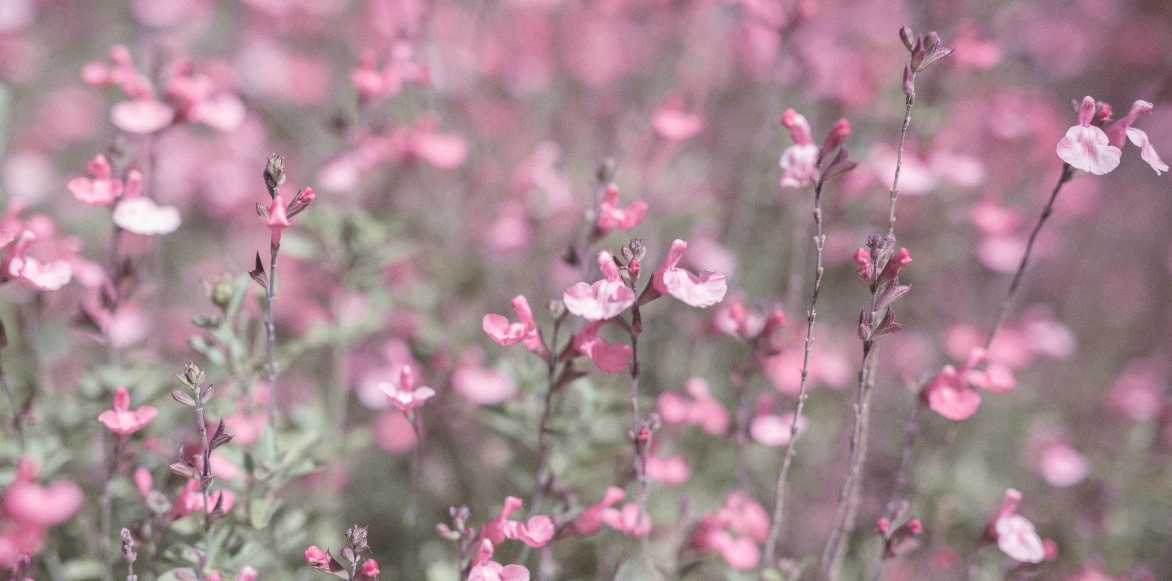
Salvia greggii ‘Sierra Coral’
Botany and description
Botanical data
- Latin name Salvia
- Family Lamiaceae
- Common name Bushy sages
- Flowering April-May to November
- Height 0.40 to 1.80 m
- Sun exposure Sun, partial shade
- Soil type Clay-loam (rich and light), Stony (poor and draining)
- Hardiness variable
Some species of sage form true small bushes. This is the case with bushy sages, such as grahamii or Graham’s sage, guarani sage, greigii, or even microphylla or small-leaved sage. Others, more tender and taller, are also worth discovering, such as Salvia guaranitica, leucantha, and involucrata.
These are woody perennial plants from the Lamiaceae or labiate family, aromatic and ornamental, much like thyme, rosemary, nepeta, and agastache, with which they share typical family characteristics: small two-lipped flowers, square stems, and opposite leaves.
They originate from South America, the Mexican mountains, and southern Arizona. These ramified perennials have a bushy and spreading habit, as wide as they are tall. With spectacular growth, they can form a true small bush from a suckering stump in just one season, reaching 0.40 to 2 m in all directions for the tallest. There are also compact varieties not exceeding 50 cm in all directions, particularly in the Salvia microphylla group.
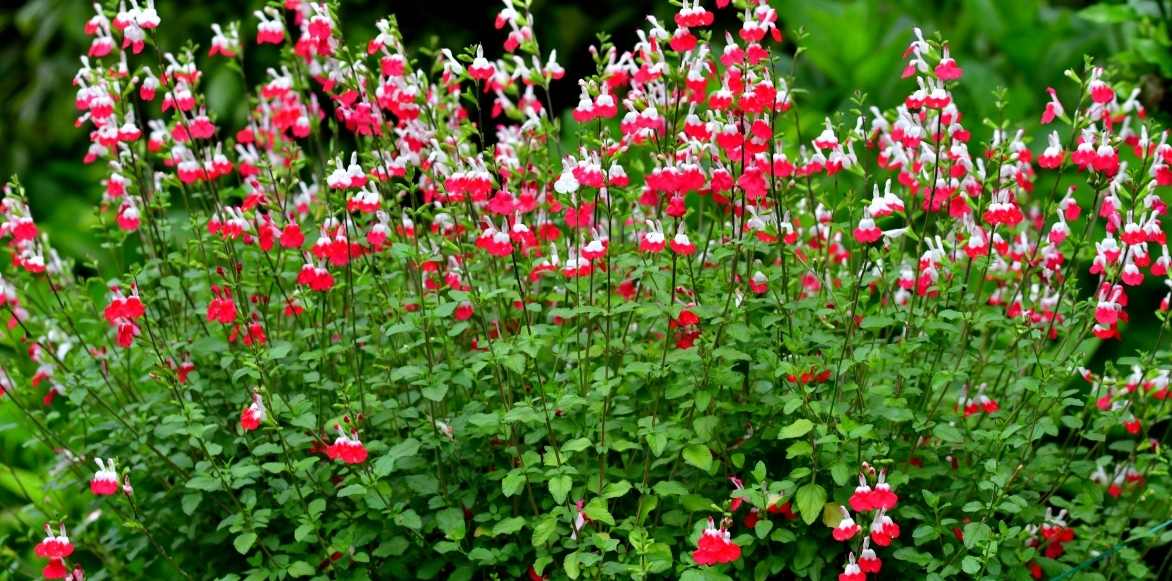
Salvia microphylla ‘Hot Lips’
On square-section stems that become woody with age, the semi-evergreen to evergreen foliage (in mild climates) unfolds. They sometimes take on purplish or black hues, as in Salvia guaranitica ‘Black and Blue’. These semi-woody stems bear petiolate, ovate, or lanceolate leaves, in a beautiful mint green to bright green, sometimes variegated with white-cream. Hairy, smooth, or slightly wrinkled, they measure 2 to 10 cm long and are crenate on the margins. The foliage of bushy sages, like that of sages, is highly aromatic. When crushed, the leaves, rich in essential oils and slightly sticky, release their mentholated, aniseed, or lemony notes, depending on the variety. Their fragrance intensifies in warm, dry weather. They have no culinary value, unlike the edible common or clary sages.
Bushy sages offer almost uninterrupted flowering from spring to autumn. It occurs in summer, earlier or later depending on the climate, and continues until the first frosts. Some, like Salvia microphylla grahamii, flower as early as April, then even more generously in September. The bilabiate flowers emerge from the foliage, grouped in spikes of 20 to 30 cm. Tubular, they are composed of five petals fused into a tube that opens into two lips, with the lower lip of the corolla forming a wide labellum. They measure 2 to 4 cm long. These small inflorescences are ephemeral, lasting barely a day, but are immediately replaced and renewed continuously.
The colour palette is very diverse, offering soft and luminous tones or, conversely, vividly coloured, sometimes very deep hues. The flowers bloom in shades of white, red, and purple, through all shades of pink, and even an unprecedented royal blue in ‘Blue Note‘ and ‘Victoria Blue Vivisal’, for example. Meanwhile, the striking ‘Hot Lips’, ‘Delice Gold and Wine’, or ‘Little Kiss’ display bicoloured flowers.
This nectariferous and melliferous flowering, renewing without interruption, is highly visited by pollinating insects, bees, and butterflies, which delight in its nectar.
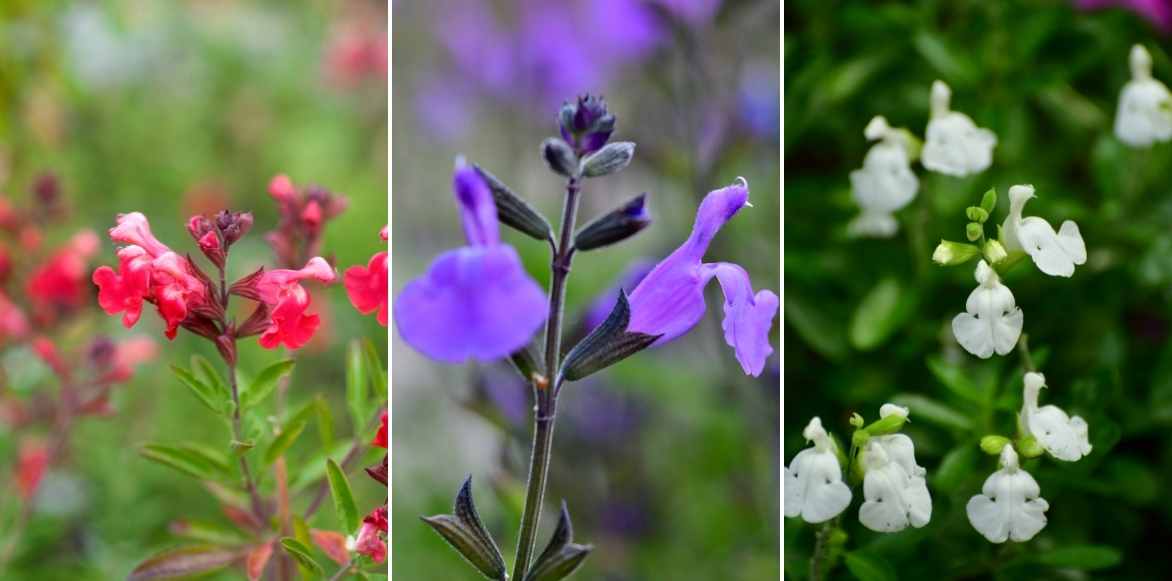
Pink, red, blue, white… sages display soft or vivid, very varied tones
Main species and varieties
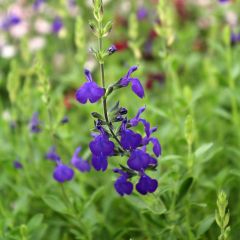
Salvia microphylla Blue Note
- Flowering time June to December
- Height at maturity 60 cm

Salvia microphylla grahamii Hot Lips
- Flowering time June to November
- Height at maturity 90 cm
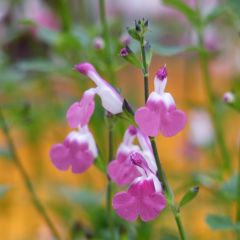
Salvia microphylla Pink Lips
- Flowering time June to November
- Height at maturity 90 cm
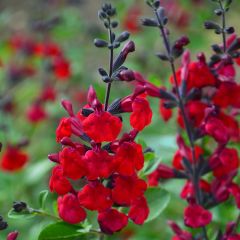
Salvia jamensis Reve Rouge
- Flowering time June to December
- Height at maturity 60 cm
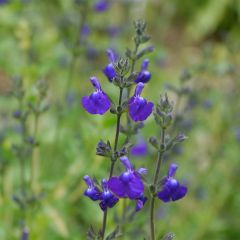
Salvia Victoria Blue
- Flowering time June to October
- Height at maturity 60 cm
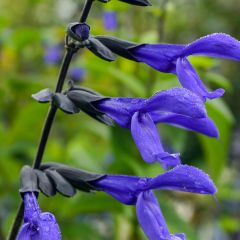
Salvia guaranitica Black and Blue - Shrubby Sage
- Flowering time September to November
- Height at maturity 1,75 m
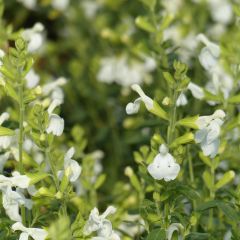
Salvia greggii Alba
- Flowering time June to November
- Height at maturity 50 cm
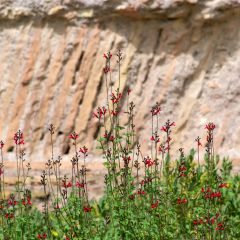
Salvia microphylla Royal Bumble
- Flowering time June to December
- Height at maturity 60 cm
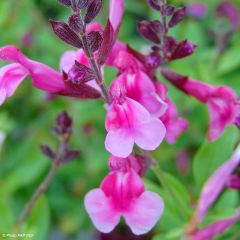
Salvia greggii Icing Sugar
- Flowering time August to December
- Height at maturity 60 cm
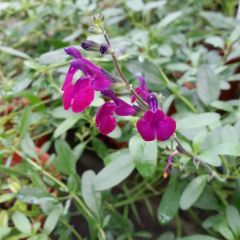
Salvia jamensis Violette de Loire
- Flowering time June to December
- Height at maturity 60 cm
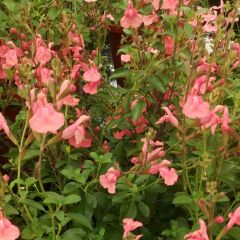
Salvia microphylla Papajan
- Flowering time August to December
- Height at maturity 70 cm
Discover other Salvia - Bushy Sage
View all →Available in 0 sizes
Available in 3 sizes
Available in 2 sizes
Available in 4 sizes
Available in 2 sizes
Available in 2 sizes
Available in 3 sizes
Available in 3 sizes
Available in 1 sizes
Available in 1 sizes
Planting
Where to Plant Bushy Sage?
Native to subtropical and tropical coniferous forests in South America, in the wild, the Bushy Sage is a plant of mild climates; in France, it thrives easily in oceanic or Mediterranean climates. Its hardiness varies greatly. Some hybrid bushy sages, such as Salvia (x) jamensis, can withstand temperatures as low as -15°C in perfectly drained soil, while others are far less hardy, especially in damp and cold climates. However, most, like Salvia microphylla grahamii, tolerate sufficiently low temperatures, around -12°C, to remain outdoors year-round.
In colder regions, it can be grown in a large pot and moved to a sheltered spot during winter to protect it from severe frosts. In milder climates, it thrives in sheltered spots, in full sun or partial shade. In northern France, it is advisable to plant it in a very sunny location, such as against a south-facing wall. It prefers dry soils and sunny areas. Full sun exposure will intensify the fragrance of its foliage. In the south of the country, it tolerates light shade. It is also preferable to protect it in winter with horticultural fleece and a thick mulch around the stump.
Most varieties appreciate well-draining and rather dry soils: light, ordinary, porous, even chalky soil will suit it perfectly. It requires very well-drained soil, as winter moisture can be fatal. It adapts to stony or even poor soils. However, moderately fertile soil will ensure abundant flowering.
With its natural appearance, it is perfect for dry gardens, coastal areas, and Mediterranean gardens. It adds colour and fragrance to gardens, balconies, or terraces. It adapts to many situations, and depending on its mature size, it can brighten up the back of borders, large rockeries, or containers, as it thrives in pots. Smaller varieties are also useful for filling gaps in borders or creating low, flowering hedges.
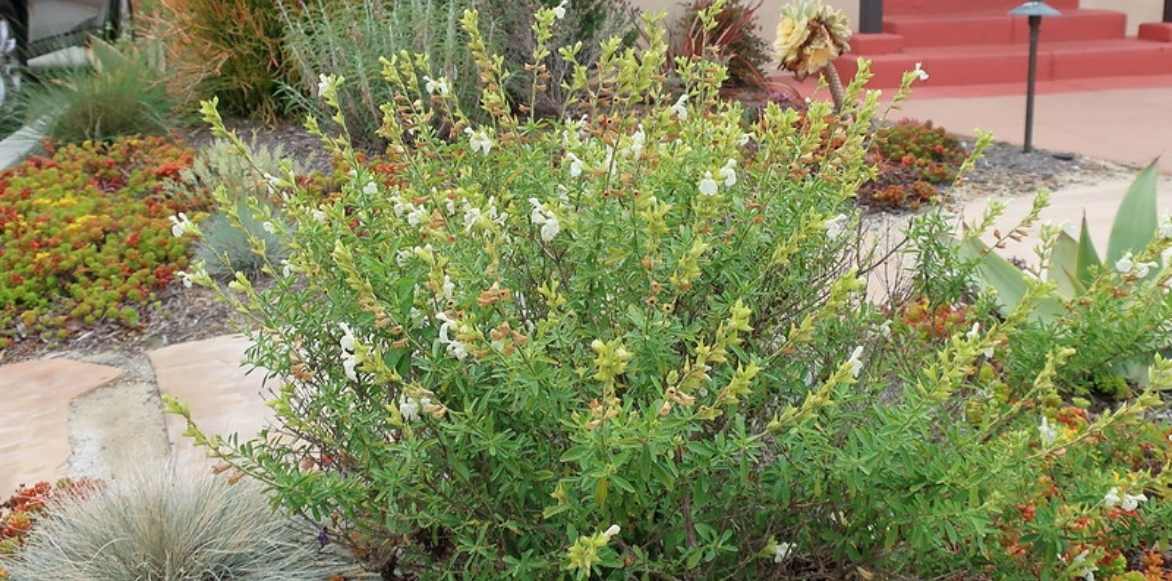
Savlia greggii ‘Alba’ in a dry garden (© Cultivar 403)
When to Plant Bushy Sage?
Plant bushy sage after the spring frosts in cold climates, or in September-October in warm climates.
How to Plant It?
In the Ground
It requires very well-draining soil, as it cannot survive in heavy, waterlogged soils, especially in winter. If your soil is clayey, improve drainage by mixing in pumice, coarse sand, or gravel, and plant on a mound to allow water to drain away. One or two plants per square metre is sufficient, especially for larger sages.
- Dig a hole 3 to 4 times wider than the root ball
- Spread a layer of drainage material at the bottom of the hole
- Place the root ball in the centre of the hole, with the collar level with the soil
- You can add a base fertiliser (roasted horn or dehydrated blood)
- Fill in and lightly firm the soil
- Water thoroughly
In Pots
For regions that are too cold, container cultivation is recommended. The substrate must be very free-draining.
- In a container with drainage holes, at least 30 cm in diameter (larger for taller sages), spread a good layer of drainage material (gravel, pumice, or clay pebbles)
- Plant the root ball in a sandy, well-draining mix of garden soil, coarse sand, and good potting compost
- Water
- Place in a sunny, sheltered spot
→ To learn all about growing bushy sage in pots, read Marion’s advice!
Maintenance, Pruning, and Care for Shrub Sage
In the Ground
The shrubby sage proves to be drought-resistant during summer. While it can withstand long, dry summers and requires no watering once well-established, a few waterings will help maintain lush green foliage and abundant flowering. For the first two summers, water regularly but sparingly. After that, it will thrive on rainwater alone, requiring watering only during prolonged dry spells.
In spring, you can spread well-rotted compost around the stump, especially if your soil is poor, and lightly rake it into the soil.
In colder regions, apply a thick layer of mulch at the base to protect it from cold and excessive rain (straw or dry leaves).
→ Follow our advice for protecting your plants from the cold.
In Pots
The substrate dries out faster than in the ground, so it should remain moist in summer to ensure continuous and abundant flowering. Your shrubby sage will need more regular watering, but avoid overwatering: it’s better to water less than too much.
In colder regions, move the pot to a frost-free location. During winter, significantly reduce watering to minimise the risk of fungal diseases, to which it can be susceptible due to excess moisture. Indoors, it may be attacked by scale insects.
Bring the pot back outside as soon as the weather warms up.
When and How to Prune Shrubby Sages?
Shrubby sages tolerate severe pruning well. In late winter, around late March to early April, use shears to cut back the clump by half to maintain a balanced habit and encourage lower buds. We also recommend regularly removing spent flowers to promote new blooms.
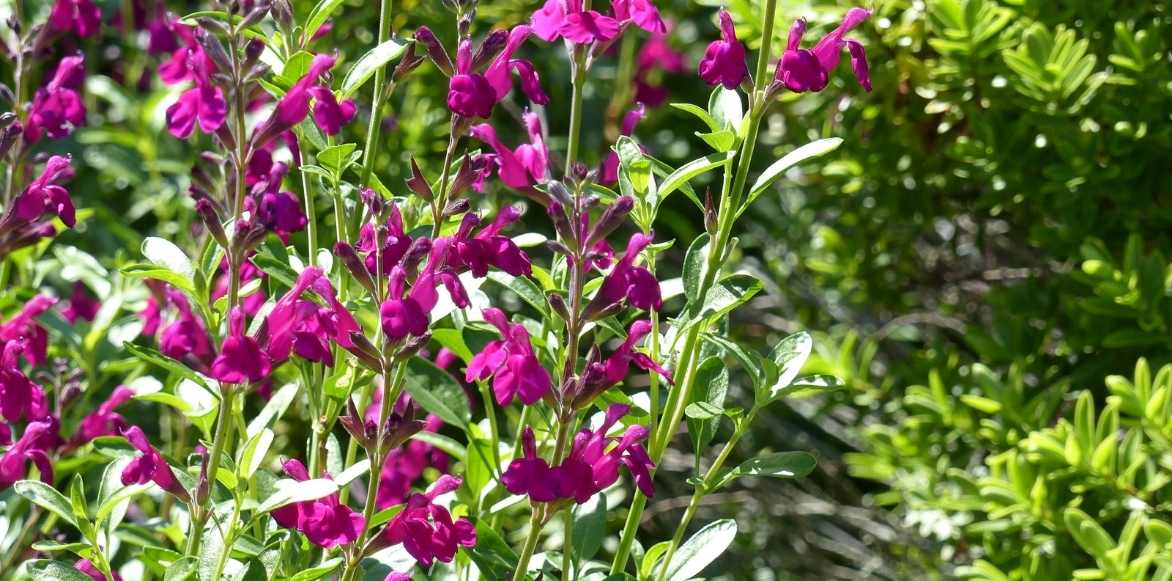
Salvia jamensis ‘Raspberry Royale’
Multiplication
How to Take Cuttings from Shrubby Sage?
You can propagate shrubby sage by taking semi-hardwood cuttings in summer.
- From June to August, using pruning shears, take lignified stems without flowers, measuring between 5 to 10 cm, just below a node.
- Remove the lower leaves.
- Plant the cuttings in sowing and potting compost.
- Place them in a humid environment in a bright location, but out of direct sunlight.
- Keep the compost consistently moist, but not waterlogged, until rooting occurs, which takes 2-3 months.
- Protect the cuttings from frost in winter by storing them in a bright, unheated room.
- Plant your young plants in the ground the following spring.
→ Learn all about the technique of taking cuttings from shrubby sage in our tutorial!
Associate
Melliferous and flowering for long months, the bushy sages naturally find their place in country gardens, in perennial and bush beds of a cottage garden, in dry gardens, by the seaside, and also in Mediterranean gardens, where they thrive in the warm, sunny climate.
In a large rockery, pair low-growing varieties of bushy sages with lavenders, ground-cover roses, rosemary, rockery campanulas, and cistus. In beds or mixed borders in the “cottage garden” style, they will mingle with gauras, asters, roses, phlox, and other colourful flowerings like Nepetas, Leucanthemum, Echinaceas, Delphiniums, Cosmos, Dahlias, alliums…

Salvia jamensis ‘Ribambelle’, lavender, cistus, and rosemary
In a natural composition, medium-sized bushy sages will add a splash of colour among grasses like Stipa tenuifolia, or Miscanthus sinensis, and the airy flowerings of yarrows or purpletop vervain.
Tall bushy sages are ideal candidates for flowering at the back of beds, alongside tall sedums (Sedum ‘Matrona’), shrubby cinquefoils, and tall, bushy autumn asters (Aster turbinellus, Aster Laevis, Kalimeris mongolica), which will accompany them right up to winter’s doorstep.
Use the flamboyant flowering of certain sages to create colourful contrasts. For example, you could plant red bushy sages (‘Flammenn’, ‘Royal Bumble’) right next to a Cape leadwort with its sky-blue flowering: the combination of the two hues is striking! The silvery foliage of artemisias or dusty millers will soften the overall effect with their grey, downy leaves.
To go further
- Discover our varieties of bushy sage.
- Find out everything you need to know about sages: planting, pruning, and care.
- Need help choosing? Explore our advice sheets on sages: Sages: which varieties to choose?, 5 sages for pots, and 5 sages for dry soil.
- Short on ideas? Discover our suggestions for pairing bushy sages.
- Explore our advice sheet: “Propagation by cuttings: everything you need to know about different techniques and our tips for successful cuttings.”
- Our sage selections by colour:
- Blue sages: the 5 best varieties
- 7 pink-flowered sages
- Subscribe!
- Contents































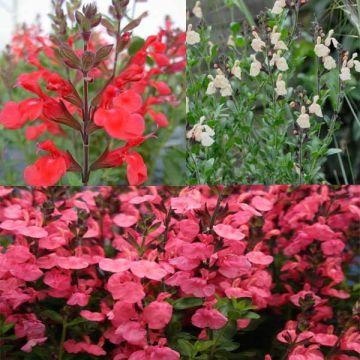

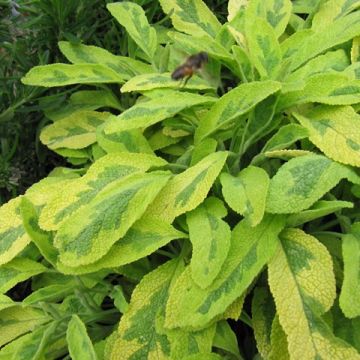
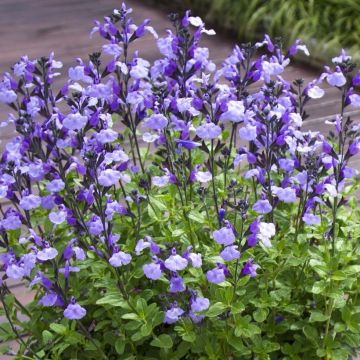
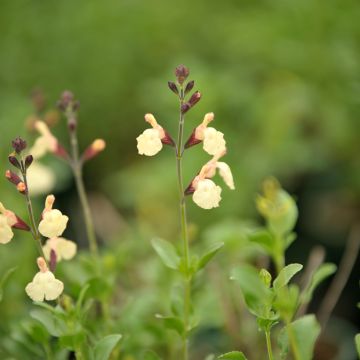
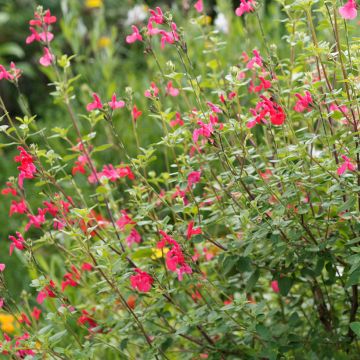
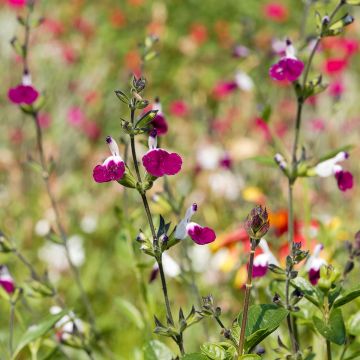
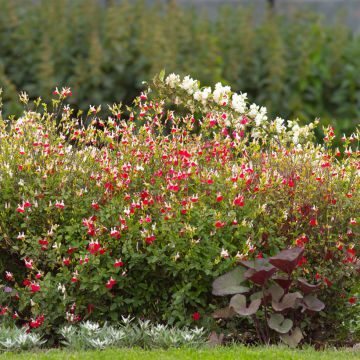
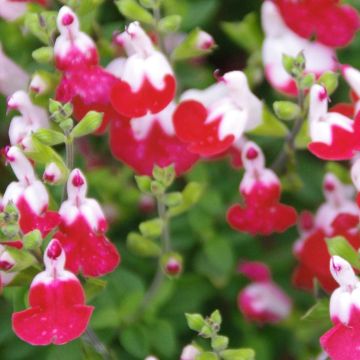
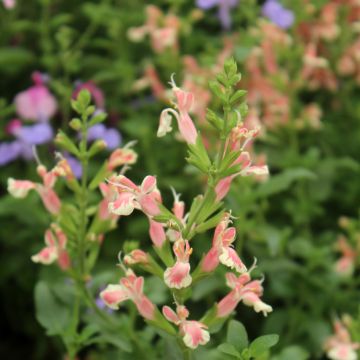
Comments